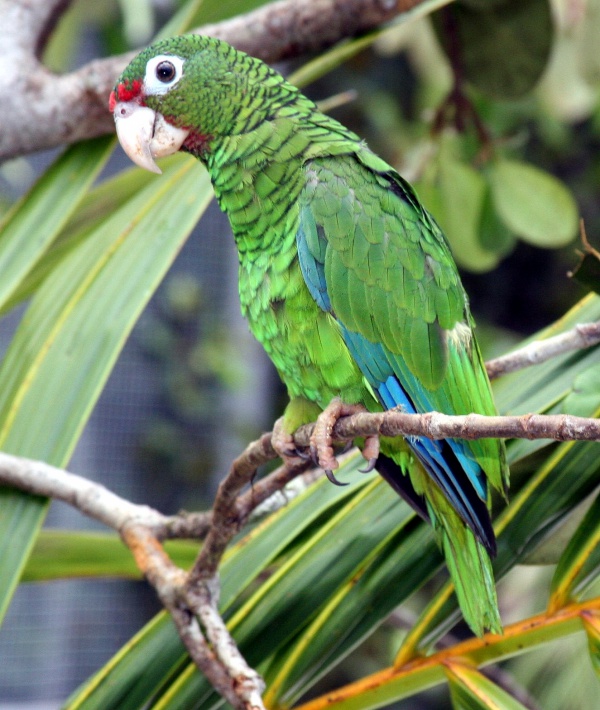Facts About Puerto Rican amazon
The Puerto Rican amazon, also known as the Puerto Rican parrot or iguaca, is the sole parrot species native to Puerto Rico and belongs to the Neotropical genus Amazona. This predominantly green bird, characterized by its distinctive red forehead and white eye rings, has two recognized subspecies. It reaches sexual maturity at around 3-4 years old, breeds annually, and nests in tree cavities. The female incubates the eggs while both parents care for the chicks until they fledge.
Regrettably, this parrot has been critically endangered since 1994, primarily due to habitat loss and human interference. Conservation efforts began in 1968. By 2012, estimates indicated there were between 58 and 80 individuals living in the wild and over 300 in captivity. The Puerto Rican amazon is closely related to other Amazona species found in the Caribbean.
These parrots measure about 28-30 cm in length and weigh between 250-300 grams. They are herbivores, consuming a diet of flowers, fruits, leaves, bark, and nectar. Active during the day, they are social and fiercely protective of their nesting areas. The species faces threats from habitat destruction, predators, and natural disasters like hurricanes.
Efforts to save the Puerto Rican amazon have included captive breeding programs, habitat protection, and predator management. These initiatives have yielded some success, with captive breeding contributing to population increases. Ongoing efforts aim to establish more wild populations and safeguard their habitats. Genome sequencing has been instrumental in these efforts, providing scientists with valuable insights into the population's health, which informs breeding and monitoring practices.
As a symbol of Puerto Rican wildlife, the community has rallied to support research and conservation projects focused on saving this critically endangered bird.
